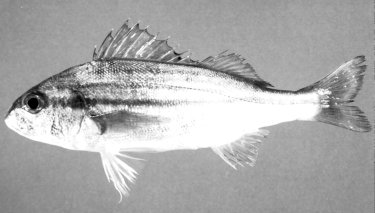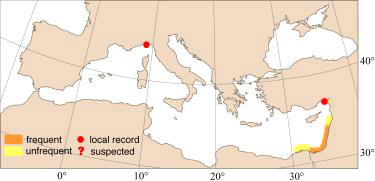
|
Relevant synonyms
Misidentification
Meristic formula
|
|
| photo : David Darom |
|
SHORT
DESCRIPTION
color :
body - yellowish silvery-grey with white belly. Three longitudinal brown yellow-gold stripes. Black spot on the upper margin of operculum.
size :
common 7-12 cm (max. 16 cm). |
DISTINGUISHING CHARACTERISTICS
Teraponidae: no pores or pits on the chin. BIOLOGY / ECOLOGY
habitat :
coastal waters. |
|
1st
MEDITERRANEAN RECORD
|

|
|
DISTRIBUTION
|
ESTABLISHMENT SUCCESS
speculated reasons for success :
|
|
|
MODE OF
INTRODUCTION |
IMPORTANCE TO
HUMANS |
|
KEY
REFERENCES
|
 Rhonciscus stridens
Rhonciscus stridens